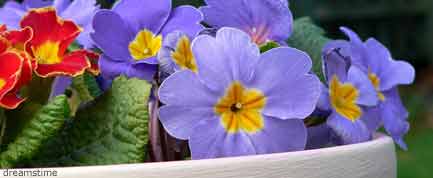Plants Recognize Siblings

Plants can recognize when they are potted with their siblings or with strangers, new research shows. When strangers share a pot, they develop a competitive streak, but siblings are more considerate of each other.
“The ability to recognize and favor kin is common in animals, but this is the first time it has been shown in plants,” said Susan Dudley of McMaster University in Canada.
After plants are potted, roots branch out to suck up water and nutrients. But when several plants of the same species are potted together, things get a little nasty: Each plant flexes its muscles, so to speak, by extending its root growth to try and snatch up valuable resources.
Unless, that is, the plants are siblings—each having come from the same mother plant—in which case they become very accommodating, allowing each other ample root space.
Because the interactions between related and unrelated plants only happened when plants were in the same pot, where root space is limited, root interactions are likely what gives plants the cue that their neighbor is related.
Dudley observed this behavior in sea rocket (Cakile edentula), a member of the mustard family that is native to beaches through North America.
The findings, detailed in the June 12 issue of Biology Letters, may not come as a surprise to seasoned gardeners.
Sign up for the Live Science daily newsletter now
Get the world’s most fascinating discoveries delivered straight to your inbox.
“Gardeners have known for a long time that some pairs of species get along better than others, and scientists are starting to catch up with why that happens,” Dudley said. “The more we know about plants, the more complex their interactions seem to be.”
- Top 10 Poisonous Plants
- Mystery Solved: How Plants Know When to Flower
- Even Two Peas in a Pod Can't Get Along

Andrea Thompson is an associate editor at Scientific American, where she covers sustainability, energy and the environment. Prior to that, she was a senior writer covering climate science at Climate Central and a reporter and editor at Live Science, where she primarily covered Earth science and the environment. She holds a graduate degree in science health and environmental reporting from New York University, as well as a bachelor of science and and masters of science in atmospheric chemistry from the Georgia Institute of Technology.









